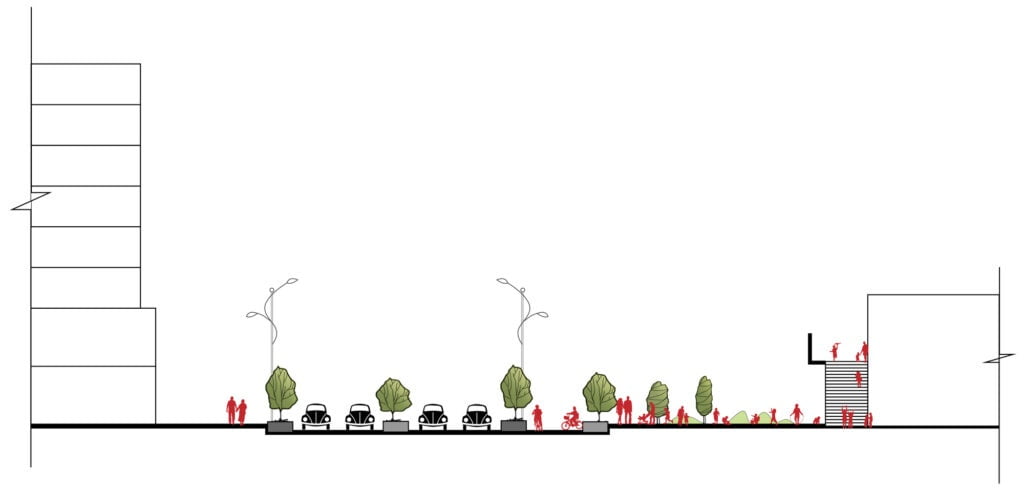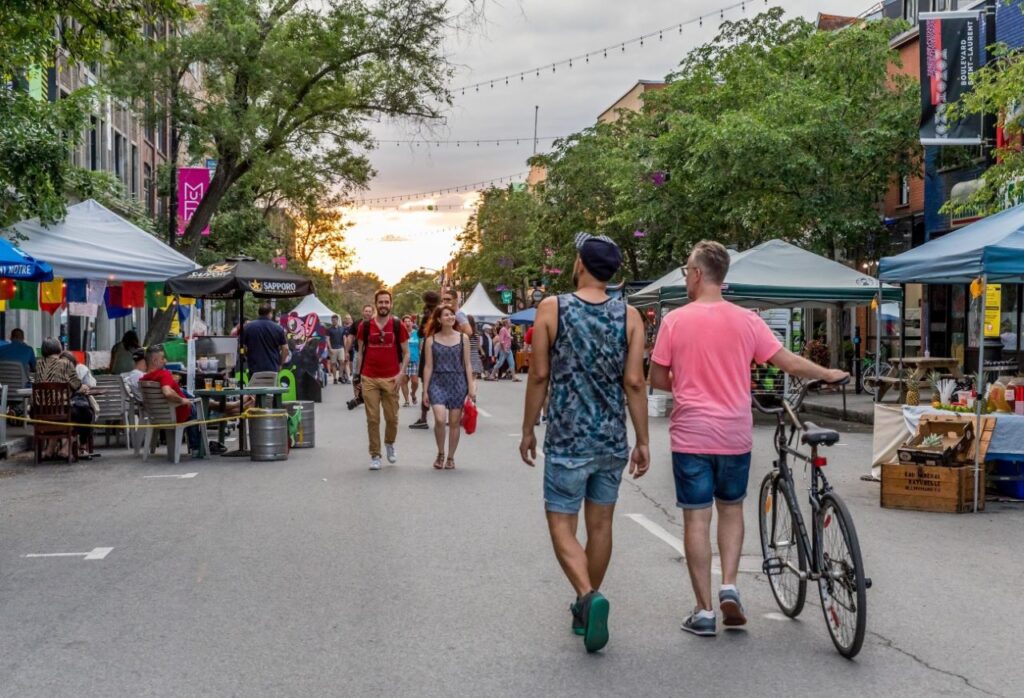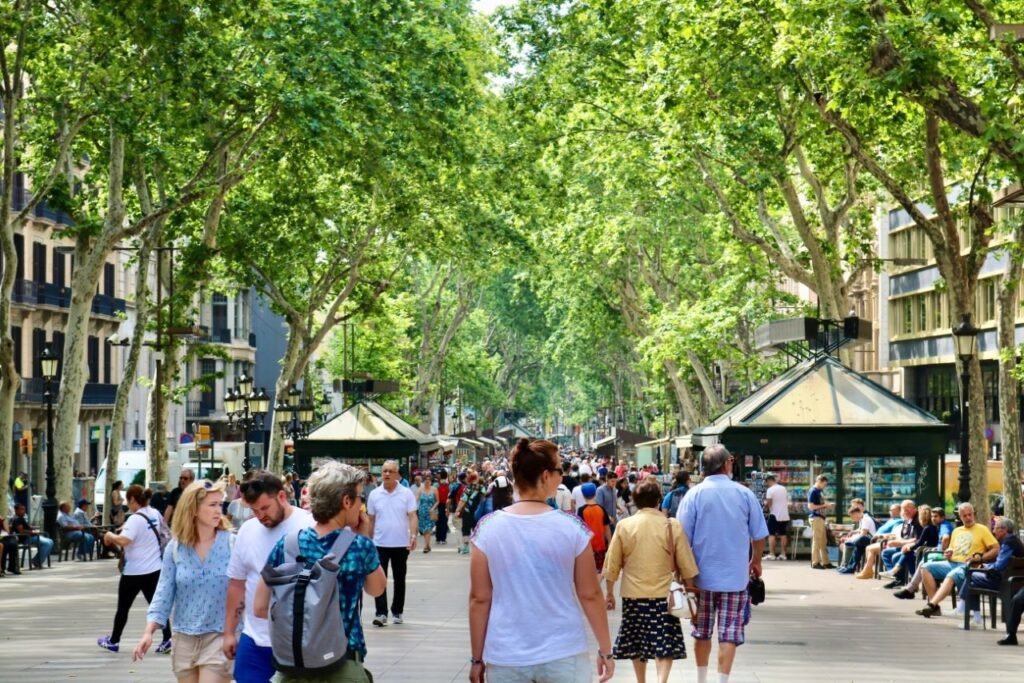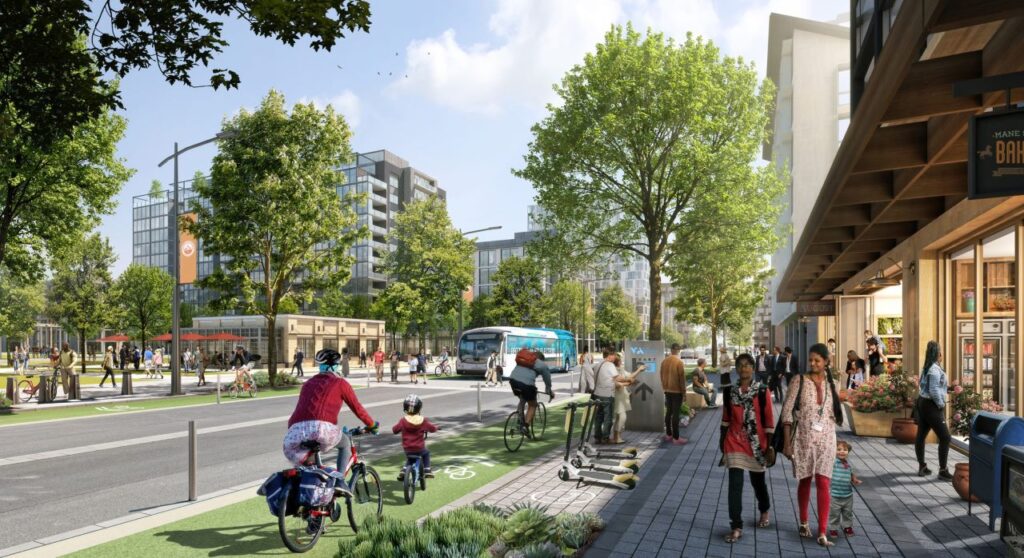What is that one element which talks a lot about the character of a place? Indeed its streets. From khau gallis to shopping streets and play streets every street has a story to tell on every corner.
Table of Contents
What is a street?
A Street is public land in between buildings or privately owned properties. It can be paved or just a patch of mud or maybe beautifully adorned with flowers. It is a connection between two places.
The street architecture is a public easement shared by all kinds of people. It is an important element through which one can experience a place. They offer space to walk, ride or engage in activities around it. They are used by everyone – adults, kids as well as senior citizens. Nonetheless, it is an important part of life for hawkers, vendors and pedestrians too.
Streetscapes
Streetscape is the look and feel of the street. Streetscape architecture influences our perception of space and portrays the quality of space. The term streetscaping is an important urban design element that has the potential to convert just a path into a happening place.

Elements of designing a street
Every element of the streetscape is responsible to create a unique experience for a person traveling through it. Mentioned below are a few of the elements –
Vehicle Lanes
Vehicle lanes are a very important part of every street. These should be designed by taking into consideration the types of vehicles and traffic in a particular area. Each lane should be carefully sized as per its utility. Additional lanes for cycles and sidewalks for pedestrians will add more value to the street.
Sidewalks
Street architecture should always consider pedestrians and their movement and safety. They promote walking and enhance the connectivity of the place. A well-designed sidewalk can also uplift the space socially and economically.
Various activities like sitting, accessing street vendors, reading newspapers, etc. can add life to the sidewalks. Every activity can have exclusively demarcated zones leaving clear space for commuting.
Curb extensions
Curb extensions provide space for street furniture and also creates a scope to design bus bulbs. These extensions narrow the crossings for pedestrians and at the same time helps in calming the traffic. They can also be used to provide roadside parking.
Speed control elements
Speed control elements ensure safe and pedestrian-friendly streets. Elements like speed humps, speed tables, or speed cushions can be used to calm the traffic and control speeds. Although these need to be placed thoughtfully by carefully analyzing its need. Excessive use of these may result in frustration for vehicle drivers and can also lead to violence in extreme situations.
Stormwater management
A good street should be designed considering the climate of the particular region. Effective stormwater management systems must be in place for a street design to be successful. Draining a large amount of water in a very short period is necessary. Some of the methods used for achieving this are – bioswales, flow-through planters, pervious strips and permeable pavers.
Landscape elements
Landscaping can enhance the quality of any space instantly. Who doesn’t like to sit under the shade of a tree or watch butterflies flying around colorful flowers? Although landscaping comes at a high cost and requires maintenance it can add value to a place.
Street furniture
A streetscape is incomplete without the essential street furniture in it. Benches, lamp posts, telephone booths, signages all form an important part of a street. These furniture’s are susceptible to be stolen or damaged. Care should be taken while designing and installing to make them vandalism-free.
Emergency equipment
The street must get evacuated in a short time during an emergency. Safety alarms, firefighting equipment’s and an emergency call booth should be provided at intervals.
Surveillance
Keeping an eye on the street constantly can be extremely difficult. Electronic means of security like CCTV can help in creating safe streets.
Pavements
The type of pavements adds a different dimension to the street. Walking on plain grey pavement and a completely distinguished experience than walking on a colorful or tactile pavement.
Universal Design
A Street is a public utility and must be accessible for all. The specially-abled too should be able to use the street with equal ease and comfort. Using tactile materials or engraving signage with braille can be a few ways to make it disabled-friendly.
Activity areas
To make a street more lively and interesting a few activities or play spaces can be planned around it. The car should be taken that these activities do not interfere with the pedestrians not being involved in the activity.
Complete streets
A complete street is a concept that refers to streets designed to ensure safety and mobility to all kinds of users. This concept is widely used in town planning of American cities. People of all ages and abilities regardless of their mode of transportation be it sbicycles, walking, or vehicles will be catered to.
The approach also involved streets designed considering their context. The concept ensures streets that are safe to walk on and reduce possibilities of accidents. It also promotes walking and cycling.
How can good streets benefit health
Below are some benefits of well-designed streets –
- Address chronic disease
- Increase physical activity
- Improve safety
- Reduce human exposure to transportation-related emissions
- Reduce motor vehicle-related injuries and fatalities
- Reduce transportation’s contribution to air pollution
Examples of beautifully designed streets
Boulevard Saint Laurent, Montreal, Canada

It is a beautiful street where you can find people walking all through the day as well as at night. The street has multiple festivals and activities planned throughout the year. During events, vehicles are not allowed in the street making it extremely pedestrian-friendly.
Camden High Street, London, England

Photo by Damiano Baschiera on Unsplash
This shopping street in London is one of the favorite destinations for shoppers and tourists. It is lined with unique buildings and has filled with shops and markets. It is a beautiful example of a pedestrian-friendly commercial street
Las Ramblas, Barcelona, Spain

The Las Ramblas is one of the most iconic streets in the world. Adorned with eateries and beautiful landscaping the street is in the bucket list of person who visits Spain. It is Barcelona’s very important street as it enhances the social as well as the economic value of the place.
Dadabhai Nawroji Road, Mumbai, India

This street famously known as the DN road connects the North and South districts of Mumbai. It is a long stretch of heritage buildings that transports us to an entirely different era. It has been designated as a grade 1A heritage streetscape.
Rajpath, New Delhi, India
The Rajpath is one of the most important streets in India. It is a ceremonial boulevard that runs from the Rashtrapati Bhavan to the India gate. It is here where the annual Republic Day parade takes place. Processions for funerals of important political leaders are held here.
Street Architecture in India
India houses a few of the largest cities in the world. It has a huge network of roadways which contributes to the largest percentage of public space available to city dwellers. But most of the streets cater only to vehicles. Other commuters are barely considered. Streets in India can be made better and safer by undertaking small measures.
Pilot projects can be assigned and public participation should be encouraged for improving the quality and condition of the street. Concepts like placemaking can be executed to create lively streets and improve the city development in India.
What can we do to make our streets better?
We as citizens can take part in initiatives that call for public participation. We can also take up small projects as individuals like planting a tree or painting a rusted bench. We can ensure to keep the streets clean so that the expenses for cleaning can be used for a better purpose.






